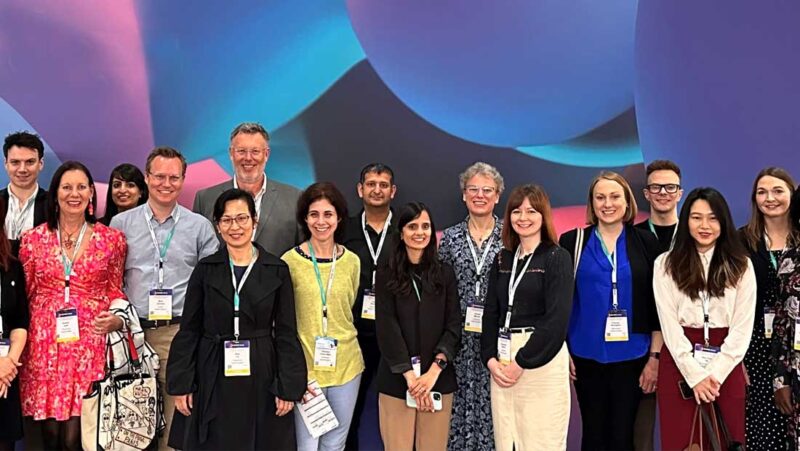As members of UKCPA, three talented pharmacists were awarded funding to attend the distinguished European Congress of Clinical Microbiology & Infectious Diseases (ECCMID)in Amsterdam this year. With seminars on topics ranging from bone and joint infection to meningitis vaccination to influenza, this was a major global event for infection experts.
Attending the conference, Richard Wilson was keen to find out about the new antifungal agents on the horizon. He discovered that the interim analysis of a phase III trial looking at the novel beta-D-glucan synthase inhibitor ibrexafungerp showed that it was safe and well-tolerated in patients with refractory IFD (it also has activity against C. auris).
There is also a new once weekly IV echinocandin in development called rezafungin which hasshown superiority over micafungin in a recent phase II trial for invasive candidiasis. It is now being investigated as a prophylactic agent in allogeneic HSCT patients. For patients who require echinocandin prophylaxis there are immediate advantages in terms of compliance.
Local and national surveillance data of resistance patternsare urgently needed to shape the clinical, diagnostic and treatment approach in fungal disease
As the newly published NHSE CQUIN on Antifungal Stewardshipwill have a huge impact on how antifungal agents are used in the coming years, Alice Liu attended some key sessions to get the experts’ opinion. She learnt that the UK has one of the highest levels of azole resistance in the EU, therefore a de-escalation strategy should be adopted for empirical antifungal therapy. This has led to the question of whether the use of combination therapy may help reduce the emergence of antifungal resistance and also increase the efficacy of agents when treating complex infections such as invasive aspergillosis and mycormycosis.
Dimitrios Kontoyiannis, a professor and Deputy Head of Research in the Division of Internal Medicine at The University of Texas MD Anderson Cancer Centre, has emphasized the importance of starting antifungals early in invasive fungal infections. However,no antifungal drug covers every mould and yeast, therefore combination therapy might be warranted at the early stage of the diagnosis whilst pending for the diagnostic test results.The experts suggested the use of flucytosine and liposomal amphotericin B for azole-resistant CNS aspergillosis due to its synergistic effect. Liposomal amphotericin B +/- echinocardin is recommended for pulmonary aspergillosis in areas with high azole resistance. Echinocardin + Voriconazole (with TDM) or echinocardin monotherapy can be used in less immunosuppressed patients in areas with low levels of azole-resistance. Local and national surveillance data of resistance patterns, rapid diagnostics, and further research to understand the driving force of environmental resistance are urgently needed to shape the clinical, diagnostic and treatment approach in fungal disease.




